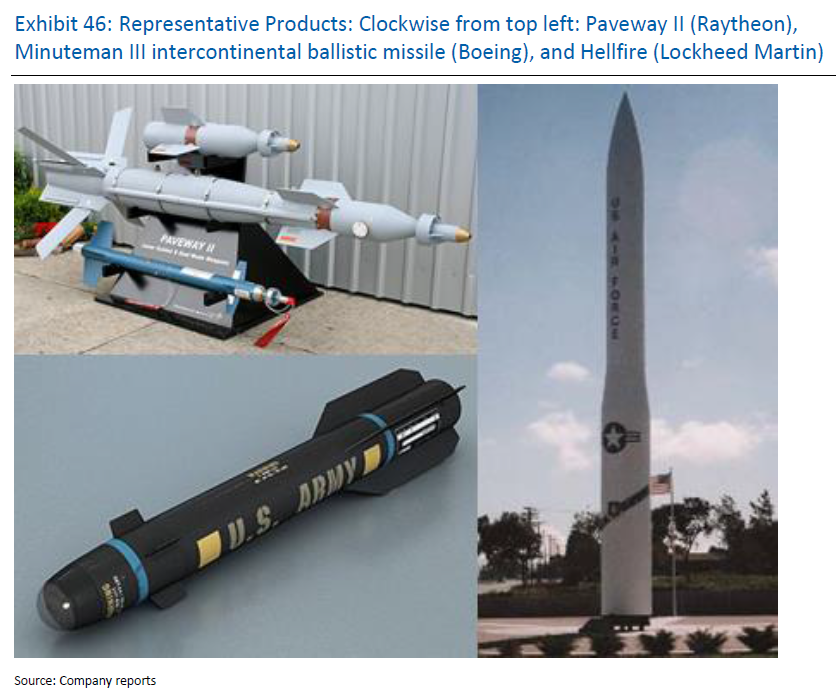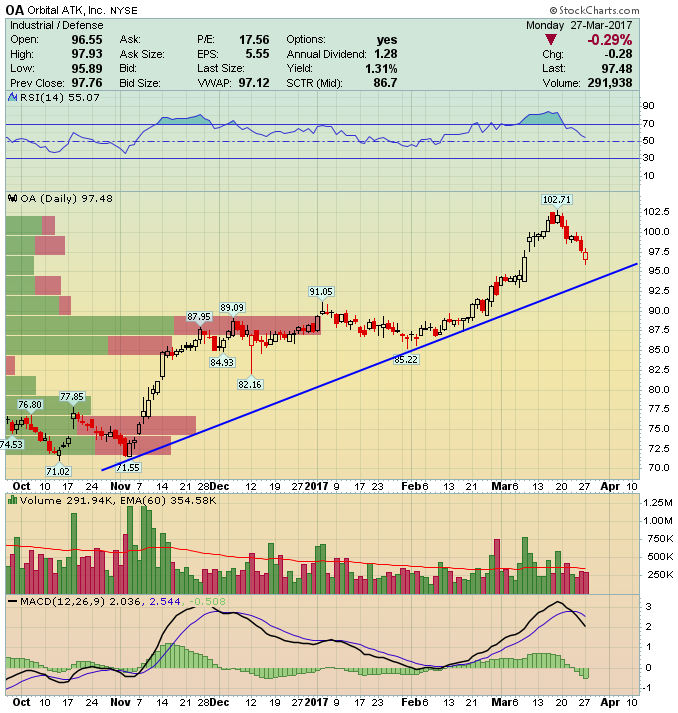Orbital ATK (OA) – Play on Modernization of Intercontinental Ballistic Missile System
We know defense spending is increasing after nearly 6 years of stagnation. We know Trump on record in early February asked for $54 billion increase in DoD budget for FY2017/2018. The preliminary details of this will come out in April that will give us more color.
In this quick write up, I wanted to narrow down to a particular large opportunity, though with low probability of playing out at least in early stages, hence not reflected in current street consensus models.
Background
Way back in 1970, Boeing installed nations first Minuteman Intercontinental Ballistic Missile (ICBM) System with an expected useful life of 10 years, but was extended multiple times and now expected to remain in place until 2030. The ageing fleet reignited interest and in 2002, the Air Force began to explore its options for a new missile to replace the Minuteman III. In June 2006, General Frank Klotz recommended “an evolutionary approach to the replacement of the Minuteman III capability.” which would continue to modernize the components of the existing missiles rather than begin from scratch to develop and produce new missiles. He indicated that Space Command supported this approach because it would be less costly than designing a new system “from scratch.” With this plan in place, the Air Force began examining the investments that might be needed to sustain the Minuteman force through 2030. According to the Air Force, it requested $2.6 million to begin the study in the FY2012 budget. The FY2013 budget request included $11.7 million for a new project area known as Ground-based Strategic Deterrence (GBSD). From that point on, GBSD became the standard for all discussions. After much deliberations and research by Air Force between 2011 and 2014, the Air Force indicated that the GBSD program “will replace the entire flight system, retaining the silo basing mode while recapitalizing the ground facilities.” Now we are taking much broader scale and potentially cost prohibitive. But Congress is moving forward with it, at least in early phases.
The Air Force received $75 million for the GBSD program in FY2016 and has requested $113 million for FY2017. The House and Senate both included this level of funding in their versions of the 2017 Defense Authorization Bills. DOD budget documents indicate that DOD expects to spend an additional $3.2 billion between FY2018 and FY2021. According to press reports, the Air Force estimated, in 2015, that the program would cost a total of $62.3 billion, in then-year dollars, over 30 years. This includes $48.5 billion for the acquisition of 642 missiles, $6.9 billion for command and control systems, and $6.9 billion to renovate the launch control centers. Some estimates go as high as $85 billion for total GBSD program and in much shorter amount of time than 30 years.
(Source: U.S. Strategic Nuclear Forces: Background, Developments, and Issues, February 10, 2017 by Amy F. Woof. See HERE.)
Beneficiaries
Boeing (BA) is the incumbent, having delivered the Minuteman III system that is being replaced, in addition to the two predecessor land-based intercontinental ballistic missile systems. In total, Boeing’s track record in ICBM systems dates back to 1958. Lockheed Martin (LMT) currently provides sustainment services for Minuteman III, and has long experience with ballistic missiles based on its Trident II program that are deployed from US submarines. Northrop Grumman (NOC) is pursuing GBSD and has touted its expertise in in flight systems, launch systems and command and control as a competitive differentiator.
While most market participants will focus on those large 3 established players in defense, if GBSD program materializes, I believe Orbital ATK (OA) to provide the most upside help replace the nations ageing Minuteman ICBMs, which make up the land-based leg of the Nuclear Triad, and is the largest Defense opportunity out there. The government wants two propulsion engine suppliers for the program, and OA is one of only two (the other is Aerojet Rocketdyne (AJRD), so it is almost guaranteed to participate. Back on March 15, 2016, announced that its Defense Systems Group has signed a contract with the U.S. Air Force to research design and development options for its ICBM. Part of a multi-year GBSD program, the award will be used to explore enhanced propulsion capability through improvements and/or alternatives to current post-boost propulsion systems. Orbital ATK’s effort will focus on trade studies and hardware demonstrations aimed at improving post-boost propulsion system effectiveness, reducing life-cycle costs, and increasing safety and reliability for future ground-based strategic missile systems. See press release HERE.
We have not heard much in whole year from OA about this, but it would be interesting to keep an eye out for this potential massive opportunity with budget talks getting underway that will include outlays for this program with more coherent timeline in coming months.


